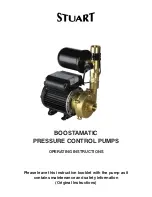
35
Note:
Using a micro gage, bring the vacuum value down to at least 500 microns and make sure the value
remains stable for at least 10 minutes after the pump has stopped. If the value increase and doesn't stay
below 500 microns, there is a leak in the system.
LEAKAGE DETECTION
• With a leakage detector, check if there is leakage.
• If leakage detector is not available, please use soapy water for leakage detection. Apply soapy water at
the suspected position and leave it there for 3 minutes. If there are bubbles coming out of this position,
there is a leak.
CHECKING AFTER INSTALLATION
Check the following items after finishing installation:
Items to check
Possible malfunction
Has the unit been installed solidly?
The unit may drop, shake or emit noise.
Have you done the refrigerant leakage test?
It may cause insufficient cooling (heating) capacity.
Is heat insulation of pipeline sufficient?
It may cause condensation and water dripping.
Is water drained well?
It may cause condensation and water dripping.
Is the voltage of power supply according to the
voltage marked on the nameplate?
It may cause malfunction or damaging the parts.
Are electric wiring and pipes installed correctly? It may cause malfunction or damaging the parts.
Is the unit grounded securely?
It may cause electric leakage.
Does the power wire follow the specifications?
It may cause malfunction or damaging the parts.
Is there any obstruction in the air inlet and
outlet?
It may cause insufficient cooling (heating) capacity.
Are dust and installation debris removed?
It may cause malfunction or damaging the parts.
Are gas valve and liquid valve of connection
pipe completely opened?
It may cause insufficient cooling (heating) capacity.
Summary of Contents for SED09KCH17S
Page 39: ......
Page 40: ...66129935048 ...






































